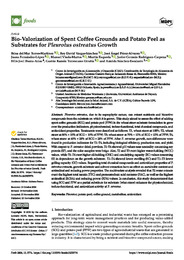Please use this identifier to cite or link to this item:
https://hdl.handle.net/11000/35021Full metadata record
| DC Field | Value | Language |
|---|---|---|
| dc.contributor.author | Torres Martínez, Brisa del Mar | - |
| dc.contributor.author | Vargas Sánchez, Rey David | - |
| dc.contributor.author | Pérez-Alvarez, José Angel | - |
| dc.contributor.author | Fernandez-Lopez, Juana | - |
| dc.contributor.author | Viuda-Martos, Manuel | - |
| dc.contributor.author | Esqueda, Martin | - |
| dc.contributor.author | Rodriguez-Carpena, Javier-German | - |
| dc.contributor.author | Ibarra-Arias, Félix Joel | - |
| dc.contributor.author | Torrescano-Urrutia, Gastón Ramón | - |
| dc.contributor.author | Sánchez-Escalante, Armida | - |
| dc.contributor.other | Departamentos de la UMH::Tecnología Agroalimentaria | es_ES |
| dc.date.accessioned | 2025-01-20T10:42:08Z | - |
| dc.date.available | 2025-01-20T10:42:08Z | - |
| dc.date.created | 2024-11-25 | - |
| dc.identifier.citation | Foods 2024, 13(23), 3774 | es_ES |
| dc.identifier.issn | 2304-8158 | - |
| dc.identifier.uri | https://hdl.handle.net/11000/35021 | - |
| dc.description.abstract | Pleurotus ostreatus, due to its saprophytic nature, can extract nutrients and bioactive compounds from the substrate on which it is grown. This study aimed to assess the effect of adding spent coffee grounds (SCG) and potato peel (PPW) in the wheat straw substrate formulation to grow over the production indicators, physicochemical, techno-functional, total chemical compounds, and antioxidant properties. Treatments were described as follows: T1, wheat straw at 100%; T2, wheat straw at 80% + 10% of SCG + 10% of PPW; T3, wheat straw at 70% + 15% of SCG + 15% of PPW; T4, wheat straw at 60% + 20% of SCG + 20% of PPW. After P. ostreatus growth, non-differences were found in production indicators for T1–T4, including biological efficiency, production rate, and yield. With respect to P. ostreatus dried powders, T1–T4 showed pH values near neutrality concerning soy protein (SP), and the color samples were beige. Also, T2 and T3 exert higher water-holding (WHC) values, while T1–T4 exert higher oil-holding (OHC) and emulsifying capacity (EC) values concerning SP, in dependence on the growth substrate. T1–T4 showed lower swelling (SC) and T1–T3 lower gelling capacity (GC) values. Regarding total chemical compounds and antioxidant properties of P. ostreatus extracts, growth substrate and solvent extraction have an effect on metabolite content and antiradical and reducing power properties. The multivariate analysis revealed that T2 water extracts exert the highest total tannin (TTC) and protocatechuic acid contents (PAC), as well as the highest antiradical (RCSA) and reducing power (RPA) values. In conclusion, this study demonstrated that using SCG and PPW as a partial substitute for substrate (what straw) enhances the physicochemical, techno-functional, and antioxidant activity of P. ostreatus | es_ES |
| dc.format | application/pdf | es_ES |
| dc.format.extent | 12 | es_ES |
| dc.language.iso | eng | es_ES |
| dc.publisher | MDPI | es_ES |
| dc.rights | info:eu-repo/semantics/openAccess | es_ES |
| dc.rights | Attribution-NonCommercial-NoDerivatives 4.0 Internacional | * |
| dc.rights.uri | http://creativecommons.org/licenses/by-nc-nd/4.0/ | * |
| dc.subject | Pleurotus | es_ES |
| dc.subject | Potato peel | es_ES |
| dc.subject | Coffee ground | es_ES |
| dc.subject | Metabolites | es_ES |
| dc.subject | Antioxidant | es_ES |
| dc.title | Bio-Valorization of Spent Coffee Grounds and Potato Peel as Substrates for Pleurotus ostreatus Growth | es_ES |
| dc.type | info:eu-repo/semantics/article | es_ES |
| dc.relation.publisherversion | https://doi.org/10.3390/foods13233774 | es_ES |

View/Open:
Bio-Valorization of Spent Coffee Grounds and Potato Peel as Substrates for Pleurotus ostreatus Growth.pdf
1,08 MB
Adobe PDF
Share:
.png)
